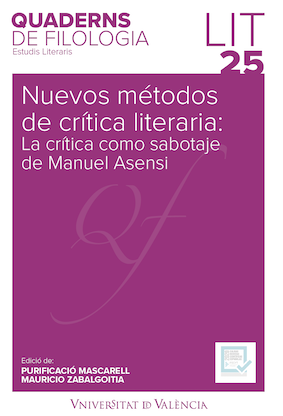Carmen and the sabotage in ballet
DOI:
https://doi.org/10.7203/qdfed.25.19002Keywords:
dance, body, performative, world models theory, speech, afept, singularization, sabotage. Abstract
Abstract
In 1966 the Russian dancer Maya Plisetskaya commissioned the then-choreographer of the National Ballet of Cuba Alberto Alonso: she wanted to embody the character of Carmen in the ballet. Until now, Merimée’s novel had been set to music by Bizet in the form of an opera and there was only one version made for the ballet in 1949, the one by the French Roland Petit. Thus Alberto Alonso made some “sketches” of the choreography in Cuba, with Alicia Alonso, before presenting it in the URSS. And so, two completely different stage proposals were born under the same choreographic text. The effect caused by the experience of seeing Alonso’s dance has nothing to do with Plisetskaya’s, despite the technical perfection in the interpretation of the latter. Why? What is contained in the interpretation of the Cuban that attracts theviewer and singles out the expression of the body in motion? As Manuel Asensi indicates in his Critique and Sabotage (2011), “cinema, television, web pages, newspapers (…) are means through which the modeling action of the heterogeneous and plural ideological apparatuses of the State is carried out, or of the Empire”, and in the same way the dance discourse also shows the construction of a world model that imaginatively captures the
subject through a concrete syllogistic structure. Thus, from the practical exercise of criticism
as sabotage, we will ask ourselves about which model of the world underlies Alonso’s interpretation.
How is the syllogism constructed in her speech? Which is the ideological direction that
such modeling takes? And to what extent does it “make individuals participate in it through
their actions and their discourses”?
 Downloads
Downloads
Downloads
Published
How to Cite
-
Abstract604
-
PDF (Español)392
Issue
Section
License
 Este obra está bajo una licencia de Creative Commons Reconocimiento-NoComercial-SinObraDerivada 4.0 Internacional.
Este obra está bajo una licencia de Creative Commons Reconocimiento-NoComercial-SinObraDerivada 4.0 Internacional.
Authors who publish with this journal agree to the following terms:
- Authors retain copyright and grant the journal right of first publication with the work simultaneously licensed under a Creative Commons Attribution License that allows others to share the work with an acknowledgement of the work's authorship and initial publication in this journal.
- Authors are able to enter into separate, additional contractual arrangements for the non-exclusive distribution of the journal's published version of the work (e.g., post it to an institutional repository or publish it in a book), with an acknowledgement of its initial publication in this journal.
- Authors are permitted and encouraged to post their work online (e.g., in institutional repositories or on their website) prior to and during the submission process, as it can lead to productive exchanges, as well as earlier and greater citation of published work (See The Effect of Open Access).



